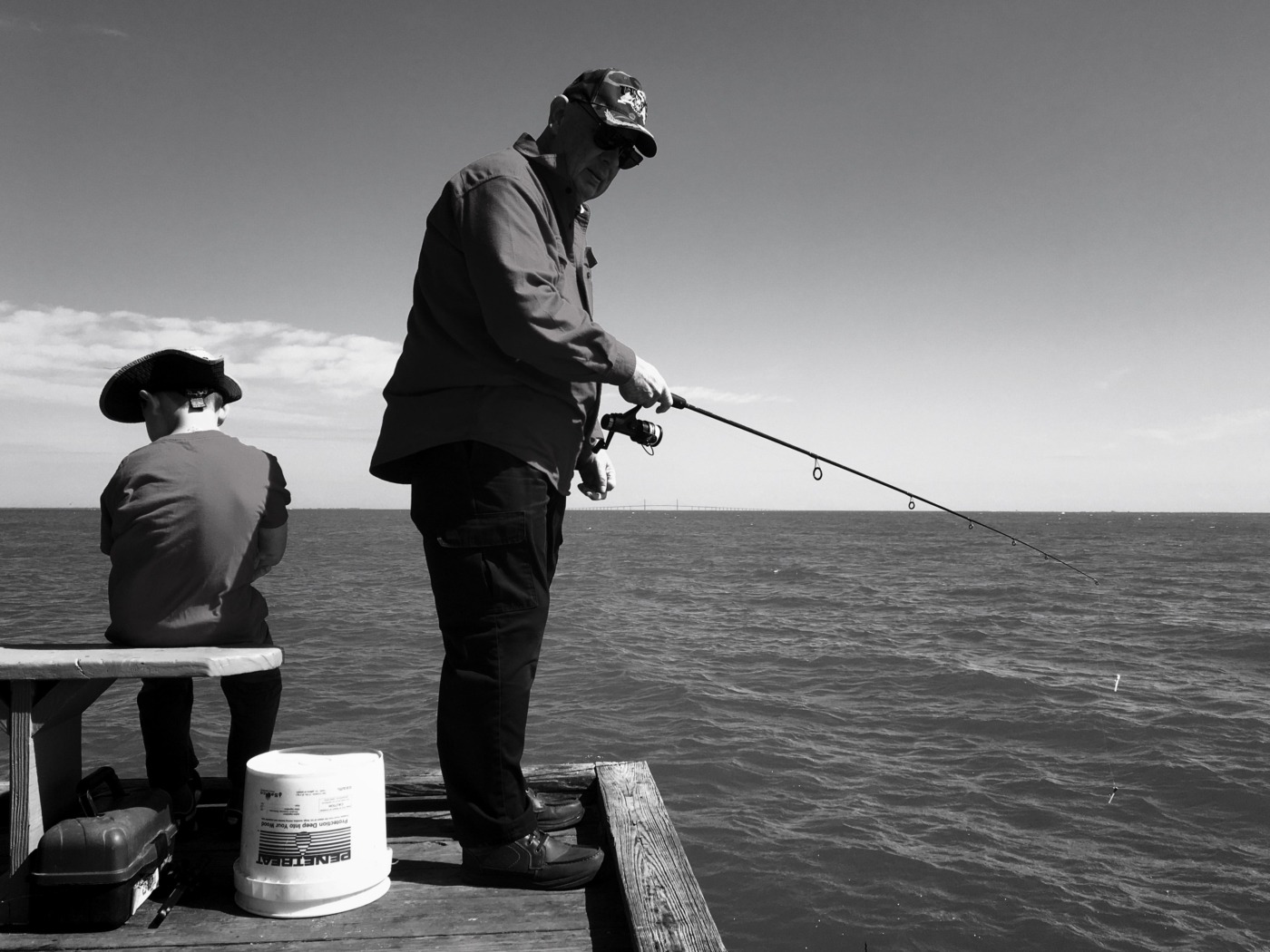‘Bait’ review: a film that bleeds Cornish blood
Mark Jenkin’s Bait is a film that bleeds Cornish blood. Set in a Cornish fishing village, the cast features a community of local talent under the direction of the native Jenkin, and explores the tensions that Cornwall faces with its ongoing gentrification by middle-class DFLs (Down From London types) in the summer months. Bait is a deeply personal film for Jenkin. Shot on 16mm using a hand-cranked Bolex camera, Jenkin processed the film himself, edited it himself and wrote and performed its score himself. Versions of Bait have been brewing inside Jenkin for two decades, at its core the struggles of the Cornish working class always present.
The final result is a remarkable film about a local fisherman, Martin Ward, who desperately clings on to the tradition of his occupation and lifestyle against the force of tourism that has taken over the village. The most notable appeal of Bait is the handcrafted aesthetic that the scarred and grainy black and white film creates. Jenkin’s powerful creative vision and D.I.Y. sensibilities enforce the importance of locality and working-class identity within the film; hard-work and Cornish pride breathe through the celluloid. Not only is Bait a notably British film, having won the 2020 BAFTA for Outstanding Debut by a British Writer, Director or Producer, but it’s also a film distinctive of England’s most independent county.
Not only is Bait a notably British film, having won the 2020 BAFTA for Outstanding Debut by a British Writer, Director or Producer, but it’s also a film distinctive of England’s most independent county.
Bait’s narrative is refreshingly concise. A tale about change, Martin (played by Edward Rowe) is determined to fish and hold on to his past. He faces adversity from his brother, who has moved on from fishing to running boat trips for rowdy tourists, and from the Leigh family, the embodiment of the middle-class invasion who figuratively and literally displace Martin. The locality of the tale is reflected in the geography, Bait features few locations that are frequently revisited to embody the modest scale of the fishing village. Jenkin presents the conflict without any frills allowing truth to dictate the film. Industry changes, fishing gear becomes interior decoration, rules are rewritten, the working class are pushed into land while the tourists occupy the seaside fishing houses and all of this speaks to the degradation of Cornish identity. Bait shows us a reality made authentic by its specifics.
At first glance, the small scale of Bait marks it as just a contemporary Cornish tale, ripe for lazy Brexit parallels. However, the film moves beyond just the here and now. Jenkin’s use of black and white 16mm recalls a history of cinema that infuses the film with a sense of transcendental time. The past exists within the visuals and within Martin but just as the celluloid bears all the marks of its history in its grain and a sense of imperfection in its artefacts, Martin is frustratingly stubborn, rugged and displaced from the present. Bait isn’t advocating for a return to ‘better times’ but instead reflects the push and pull of the past and future. Jenkin constructs the film cyclically, foreshadowing future events and returning to images in new contexts, imbuing Bait with a timeless quality.
Bait isn’t advocating for a return to ‘better times’ but instead reflects the push and pull of the past and future.
There is something alien about seeing a modern Range Rover through a format evocative of a long, lost time. Jenkin recalls Kuleshov, intercutting scenes with images of old carvings and Martin’s occasional catches. A quality born out of the limitations of shooting film, these visuals coat Bait in an atmosphere of strangeness. The otherworldliness is amplified by the post-synced sound and the juxtaposition of accents, underlined by Jenkin’s droning analogue synths. Amongst the presence of Martin’s deceased father, you start to wonder if there’s something more under the waves. Where exactly are we? Or perhaps, when are we? Crucially, the fishing village is never named.
The transcendental qualities of Bait propel the film into something beyond time and place. However, the film remains fiercely expressive of Cornwall. It is Jenkin’s reflection of the truth that grants Bait’s universal appeal. The uncomplicated narrative allows the cinematic language to reflect themes of alienation and identity, born out of the Cornish working-class experience but relatable to all. Jenkin remarks that in America, a woman expressed ‘you’ve made a film about my dad’. Bait’s triumph is the ease in which an uncompromising vision of Cornwall is able to hook into anyone of any age, of any place.

Comments